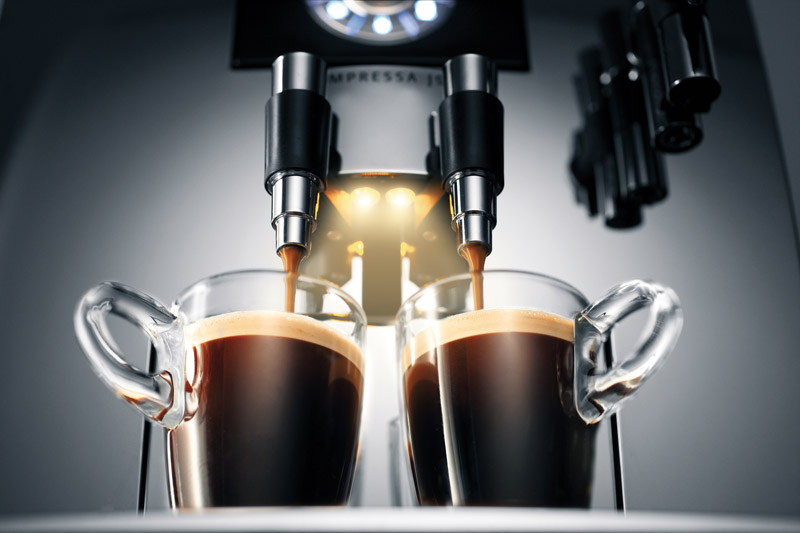How To Clean a Coffee Machine
Is there anything worse than arriving to the office on a Monday morning, eyelids heavy from a busy weekend, to find that your only salvation, the office espresso machine, is out of order? You check your watch – 8:47. You’ll never make it to the Starbucks Drive Thru before your first meeting at 9. The day is doomed, and what makes it worse it that it was all completely, unequivocally, tragically avoidable.
The number one cause of coffee machine breakdowns is improper coffee machine cleaning, and the good news is that stories like the one above can be mitigated with just a few simple hygiene habits that will minimise downtime and maximise the longevity of your machine.
If you’re wondering “How do you clean a coffee machine?” worry not, we’ll break it down for you right here.
Disclaimer: For a coffee machine on rent, please refer to your manual for specific cleaning instructions. If you’d like additional training on your coffee machine cleaning and maintenance requirements, please speak to your account manager or contact us to book with one of our engineers.
Cleaning Your Bean-to-Cup Machine
Bean-to-cup machines are some of our more complex systems due to the bean grinder. This essential piece of kit must never be removed or tampered with, except by an engineer.
Thankfully, many of these machines include an automatic cleaning cycle that involves dropping a cleaning tablet into a designated compartment. This cycle flushes out coffee oils and residue from the machine’s internal components.
However, this automatic cycle is not always sufficient on its own. You should also:
- Wipe down the exterior daily to prevent dust and grime buildup. It can be helpful to use a cleaning brush for coffee machine to remove any loose ground coffee that is still dry.
- Clean the coffee dispensing spout regularly to avoid clogging.
- Remove and rinse the brew unit weekly, if your machine allows, to prevent coffee grounds from accumulating and causing blockages.
Cleaning the Milk Frothing System
Fresh milk systems are notorious for causing machine issues if not properly maintained. Milk residue can quickly build up and lead to blockages, poor froth quality, and even unpleasant odours.
Integrated Milk Frothing Pipes:
- Run the machine’s automatic milk cleaning cycle after every use or at the end of the day.
- Use a specialist milk system cleaning solution weekly to remove stubborn milk residues.
- Detach and manually clean pipes where possible to ensure there are no blockages.
Removable Milk Containers:
- Empty and rinse the milk container between
- Wash the canister thoroughly with warm, soapy water at least once a week.
- Ensure all connectors are dry before reattaching to avoid bacterial growth.
Cleaning the Drip Tray and Grounds Container
The drip tray and the grounds container are the parts than collect waste from your coffee machine and so can accrue grime quickly if not dealt with.
Drip Tray:
- Empty and clean coffee machine drip tray at least once a day to prevent overfilling.
- Wash the tray with warm, soapy water to remove any coffee stains or sticky residues.
Grounds Container:
- Empty the grounds container at least once a day. Your coffee machine is likely equipped with a sensor or counter that will prompt you to empty the container when it’s full and prevent you from preparing another coffee until it’s been taken care of.
- Once a day, wash the container thoroughly with warm soapy water and allow it to airdry before placing it back in the machine.
Descaling Your Espresso Machine
All our machines are equipped with inline water filters that do an excellent job of removing limescale and mitigating the risk of build up before it even makes it into your office coffee machine. Despite this, it’s not possible to remove all of the limescale, so it’s important to regularly descale your machine to avoid damage caused by buildup.
Frequency:
- Descaling should be carried out every 4 to 8 weeks, depending on your water hardness and machine usage.
- Some machines will notify you when descaling is required.
Method:
- Follow your machine’s instructions for descaling. Typically, this involves using a coffee machine cleaning powder, descaling solution or tablet dissolved in water. Your machine may come with a hygiene kit or recommend a specific solution.
- Run the descaling programme as directed by your machine.
- Rinse the machine thoroughly afterwards to remove any traces of the descaling agent.
- Despite being a popular limescale removing “hack”, it’s not advised to be cleaning coffee machine with vinegar products. Always consult an engineer if you’re unsure on what products to use.
General Maintenance Tips for Any Hot Drinks Machine
- Incorporate daily, weekly, and monthly cleaning routines to keep your machine in optimal condition.
- Familiarise yourself with your machine’s self-cleaning programmes and utilise them regularly.
- Remember that self-cleaning cycles are helpful but do not replace manual cleaning. It is equally important to wash coffee machine parts that are removable regularly with soap and warm water.
Cleaning a coffee machine regularly ensures your office coffee machine remains a reliable source of caffeine-fuelled productivity. By adopting these simple practices, you can extend the lifespan of your machine, improve coffee quality, and prevent those dreaded Monday morning breakdowns.
A little effort each day goes a long way – your future self will thank you (with a fresh espresso in hand).
